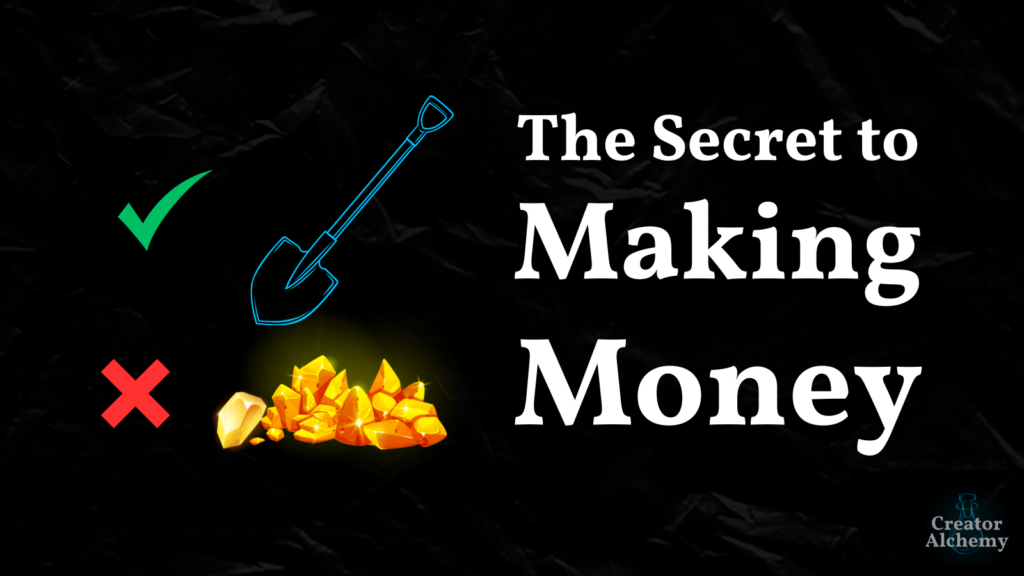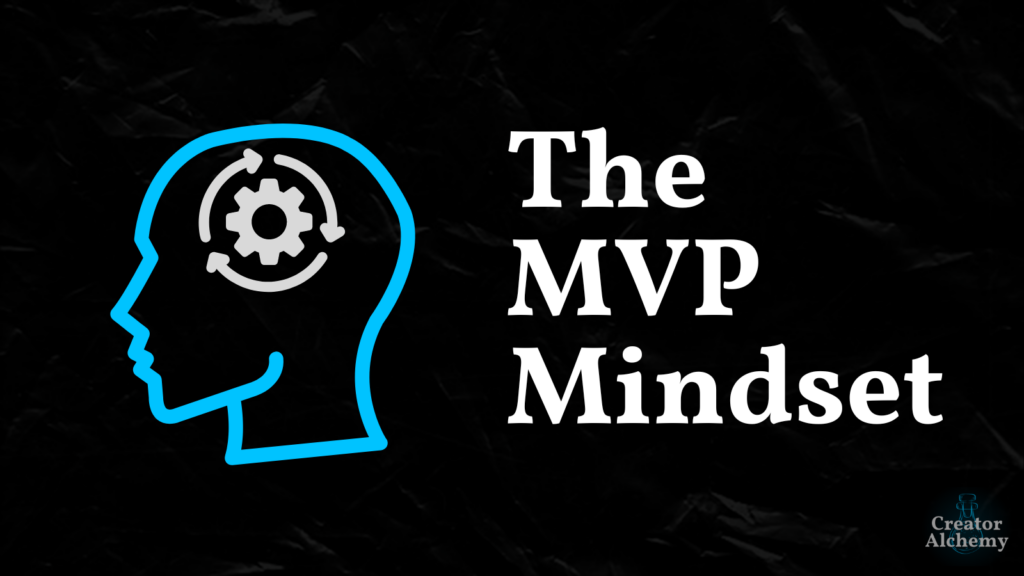Being a creator is hard, especially when you’re starting out.
Most of us are bootstrapped, meaning we’re not playing with house (aka, investor) money. Any money you put into your business is money that isn’t going to feed your kids or keep the lights on.
Which is why many creators, especially early on, over-analyze which platforms to choose.
Should you go with the platform that costs $7/m, $50/m, or $200/m?
What if I told you it doesn’t matter?
Or, more specifically, what if I told you there’s a way to make the cost irrelevant?
Here are 3 strategies I’ve learned the hard way to de-risk, de-stress, and de-over-analyze the economics of being a creator…
•••
Presell Like a Pro
Most course platforms have a free trial period you can take advantage of.
When I launched the first cohort of Intentional Life Design , I wasn’t sure if anyone would enroll.
Plus, the platform I wanted to use seemed expensive (I was reasonably broke at the time), so I wasn’t ready to commit that much money on an unproven product.
So I signed up for a free 30-day trial and ran a 14-day presale.
That gave me plenty of buffer before committing any money.
If I hit validation (meaning X number of people enrolled) within 14 days, I’d have more than enough to cover the hosting costs, plus cover my time and other expenses to build the course.
If I didn’t hit validation, I’d refund anyone who did enroll, then cancel my trial so I wouldn’t be charged.
This is a great strategy to de-risk creating a course or digital product.
One, because preselling allows you to only build what people actually want. No more wasting time and money building something only to launch to crickets.
Two, because you only pay for a platform subscription with money from the course you’re hosting on said platform.
It’s the closest to playing house money a bootstrapped creator can get.
How did that first presale go?
Pretty decent.
If you want a walkthrough of how I developed the course and hit $27K, watch this video:
Now, I presale everything—both live and self-paced courses.
Which brings me to the second strategy…
•••
The Art of Onboarding Surveys
Onboarding surveys take the guesswork out of what to put in your course.
Students literally tell you what they want to learn or achieve by the end of it.
Take their responses and create content that acts as a bridge that takes them from where they currently are to where they want to be.
Don’t overcomplicate it.
I use a similar onboarding survey for all my courses, which is some version of:
- How do you describe yourself?
- What are the top 3-5 things you’re most interested in learning or being able to do by the end of this course?
- What are the top 3-5 things currently holding you back?
- Based on the previous question, what have you already tried to overcome the things holding you back (books, courses, etc.)?
- Is there anything else you’d like to add?
Now I know exactly:
- Who they are
- What they want
- What’s getting in the way
- What they’ve already tried
- Anything I might not’ve thought about
Now, I know exactly what to put in the course (and on the landing page to sell the course).
And if there are responses from the survey I don’t think would fit into the course I’m currently building, I can turn them into content for a future course I may never have thought about people wanting had I not sent the survey.
Combining preselling and an onboarding survey is fantastic because people literally tell you what to build, then give you money to go build it.
Zero risk.
Zero stress.
Zero guessing.
Zero wasted effort.
All upside.
But there’s one more piece to this puzzle: Pricing.
•••
Minimum Viable Pricing
This is a super simple strategy, especially when you’re trying to price your self-paced courses.
I use Kajabi to host my self-paced course, but I’m currently working on migrating my main website from WordPress to Kajabi so all my content’s in one place (and to reduce compatibility and tech issues with WP).
So far, I love Kajabi. It’s by far the most robust and well-designed platform I’ve used.
But it’s also the most expensive one I’ve used.
The plan I’m currently on is $199 a month (it gets cheaper if you sign up annually).
The platforms I was using cost about this much, just spread out over 3-5 platforms ($40 for a CRM, $100 for course hosting, $80 for a community platform, etc.), but Kajabi does all these and more. Plus, if it’s good enough for creators like Justin Welsh, it’s good enough for me.
But convenience aside, I’ve found a stupid simple way to cover the $199 monthly subscription…
Create a self-paced course that’s $199.
All I have to do is sell one each month to break even.
That means I have 30 days to get a single purchase of a kickass course every month.
Within a few weeks of launch, my self-paced course paid for roughly 7 years’ worth of my Kajabi subscription.
You’re probably sitting on tons of potential digital products right now.
I never wanted to create a coaching course because, although I love being a coach, the coaching industry itself is unregulated. There are tons of bullshit snake oil salesmen hocking terrible products out there.
But people kept asking me about how to become a coach or level up as a coach, especially after they learned I’ve worked with Ali Abdaal .
I realized I had no right to complain about a problem if I wasn’t willing to create a solution.
So I threw up a landing page to presell the course, sent an onboarding survey, and dumped the best of everything I’ve figured out over the last 15 years studying psychology into a bullshit-free course on how to coach—and World-Class Coaching was born.
Since launch, hundreds of people have learned the skills to charge $500+ an hour coaching clients they love working with, which is awesome.
Since launch, I’ve continued to add content, collect testimonials from people getting great results, and offered more for the course (private audio-only feed of all modules, office hour recordings, monthly live office hours, and more). As the value of the course has increased, so has the price.
Over time, I’ll build complementary courses at similar, or higher, price points.
Build the right systems and you can easily scale from aiming to make one sale per month to making one sale per day.
One sale a day is over $70,000 for the year.
$70,000 is enough to live off (unless you’re bougie) without having to spend 40 hours a week at a job you hate. Once your living expenses are covered, you’re free to spend your time on what matters—with your family, exploring your creativity, building more kickass courses, whatever.
Add in affiliate sales, word of mouth, and sponsoring a few well-positioned newsletters, and the price of a Kajabi subscription (or whatever platform you want to use) becomes extra irrelevant.
This is the power creators can tap into by building courses and digital products.
You get to:
- Make a living
- Helping people
- By sharing what you know
- And building a business that supports your lifestyle
That’s the fucking dream.
Also, this isn’t an ad for Kajabi, I’m just more familiar with it than other all-in-one platforms. But if you want to check it out for yourself, and help support a fellow creator’s business (if you like that sort of thing), feel free to use my affiliate code to take advantage of any bonuses they have going on right now.
Even if you don’t use my code, I’d still recommend checking it out if you plan to create courses and other digital products.
It’s legitimately been a game-changer for my creator business.
•••
Wrap Up
Hopefully, this gave you some ideas about how you can de-risk the economics of being a creator.
You don’t have to charge $199 for your digital product. You can charge $50 or $5,000.
But the simple combination of preselling, sending onboarding surveys, and having at least one product where a single sale covers your operating costs will take an insane amount of stress, risk, and analysis paralysis off your plate.
So you can spend less time worrying, and more time creating.



